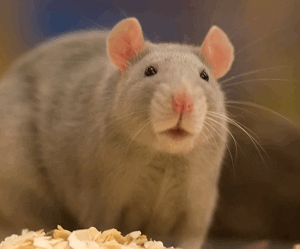Science Note/Saved By a Whisker
Air Date: Week of October 22, 2010

(Photo: Flickr CC Tomi Tapio)
Scientists recently showed that it’s possible to prevent strokes in rats by stimulating a single whisker for four minutes. As Amanda Martinez reports, if humans respond similarly, future stroke treatment could be as simple as massaging one’s fingertips.
Transcript
GELLERMAN: It’s Living on Earth. I’m Bruce Gellerman. In just a few minutes, a failed experiment and an accidental discovery that could revolutionize our understanding of genetics. But first, this Note on Emerging Science from Amanda Martinez.
[SCIENCE NOTE THEME]
MARTINEZ: When a person has a stroke, every second counts. A blood clot stuck in a major artery is most often to blame. It prevents blood and oxygen from reaching the brain and cells begin to starve and die. If doctors or EMTs can’t loosen the clot quickly, brain damage becomes permanent.

(Photo: Flickr CC Tapio Flickr)
At the moment, the only way to treat a stroke is to give the victim blood thinners that break the clot apart. But new science suggests that in the future, treatment could be as simple as getting a massage.
Scientists at the University of California Irvine recently showed that it’s possible to prevent stroke damage in rats by stimulating a single whisker. The method was 100 percent effective, but had to be performed within two hours of blockage in the rat’s artery to work.
Researchers found that stimulating a lone whisker for four minutes activated the blood-deprived region of the rat’s brain. The demand for blood became so great, it caused alternate arteries to retrieve blood pooled within the clogged artery and re-route it. Imagine a crowded theater full of people trying to escape. Instead of throwing themselves at a single locked door, they suddenly find four emergency exits.
But of course, rats aren’t humans and we don’t have sensitive whiskers, so the question remains as to whether the technique could work for us. The good news, researchers say, is that our lips and fingertips serve the same essential purpose as a rat’s facial sensors. And given how dangerous and debilitating strokes can be, they believe a non-invasive, cheap, potential fix such as this might well be worth a shot.
And that’s this week’s note on emerging science. I’m Amanda Martinez.
[SCIENCE NOTE THEME]
Links
Living on Earth wants to hear from you!
Living on Earth
62 Calef Highway, Suite 212
Lee, NH 03861
Telephone: 617-287-4121
E-mail: comments@loe.org
Newsletter [Click here]
Donate to Living on Earth!
Living on Earth is an independent media program and relies entirely on contributions from listeners and institutions supporting public service. Please donate now to preserve an independent environmental voice.
NewsletterLiving on Earth offers a weekly delivery of the show's rundown to your mailbox. Sign up for our newsletter today!
 Sailors For The Sea: Be the change you want to sea.
Sailors For The Sea: Be the change you want to sea.
 The Grantham Foundation for the Protection of the Environment: Committed to protecting and improving the health of the global environment.
The Grantham Foundation for the Protection of the Environment: Committed to protecting and improving the health of the global environment.
 Contribute to Living on Earth and receive, as our gift to you, an archival print of one of Mark Seth Lender's extraordinary wildlife photographs. Follow the link to see Mark's current collection of photographs.
Contribute to Living on Earth and receive, as our gift to you, an archival print of one of Mark Seth Lender's extraordinary wildlife photographs. Follow the link to see Mark's current collection of photographs.
 Buy a signed copy of Mark Seth Lender's book Smeagull the Seagull & support Living on Earth
Buy a signed copy of Mark Seth Lender's book Smeagull the Seagull & support Living on Earth

